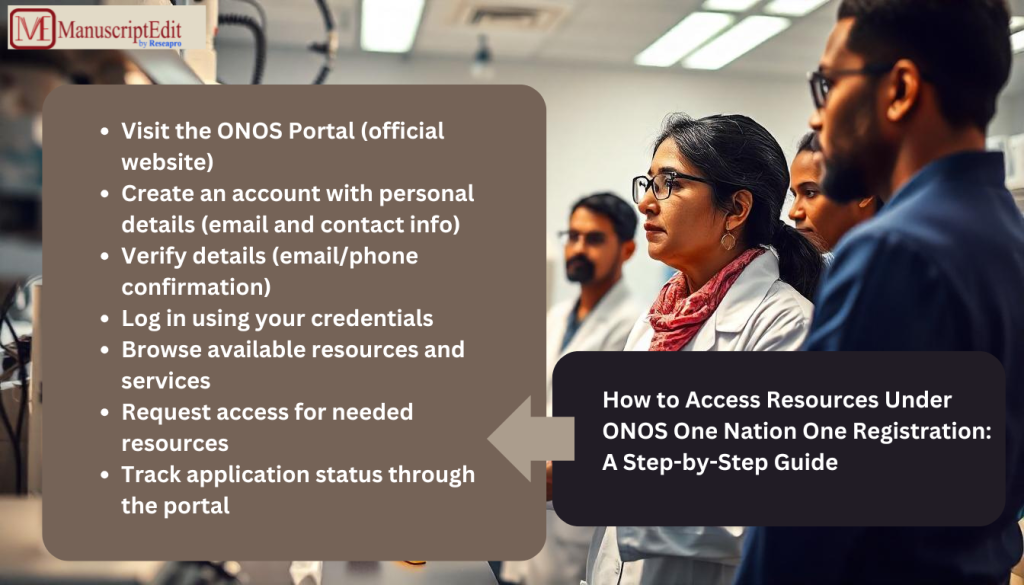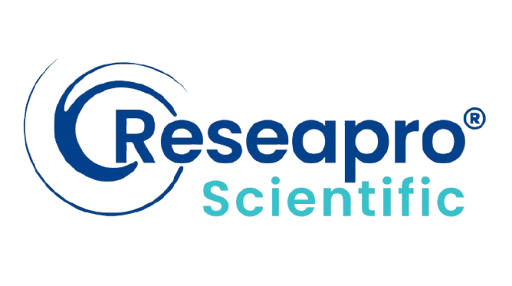
Imagine a world where accessing academic resources is as easy as ordering products from online applications. Education will be at your fingertips and easily accessible. Sounds interesting, right? India’s “One Nation One Subscription” initiative makes that dream a reality. Through the provision of nationwide access to scholarly publications, ONOS promises to transform education and research. This giant leap democratizes access to knowledge and empowers researchers and students across the country. Does open access have any impact at all on researchers, though? What does it shape for India’s academics? Let us take this plunge into examining this effort in greater depth, which is far-reaching indeed.
So, this brings up one question- What is open access all about?
Open access (OA) is changing academic publishing by making research freely available to the public, with no paywall, and allowing global sharing of knowledge. However, with this comes high Article Processing Charges (APCs) for the authors, so despite the benefits of access and impact, it is very cost-prohibitive.
Leading open-access platforms exemplify this revolution. For example, PLOS ONE publishes papers across disciplines; BioMed Central focuses on medical advancement, and Frontiers in Psychology publishes the human behavior literature- all of these free, leading-edge studies. These platforms can bring researchers, policymakers, and the public together and drive progress and innovation at the global level.
Understanding Open Access and Its Costs
Publishing in open-access journals has several benefits with a high price tag. Since open access offers the benefit that research is open to all people, this advantage has a counterproductive balance of Article Processing Charges, directly paid by the author.
• The Average Price Tag: APCs are usually between $900 and $3,000 per article, depending on the impact factor of the journal and discipline.
• Differences in Charges: These high-impact journals, especially medicine or biotechnology cost even more money; however, the small niche journals cost less.
These are the biggest challenges Indian researchers face. Since research funds are scarce in most institutions, authors are caught between the choice of paying for publication fees or investing in new equipment and performing additional experiments.
How ONOS Relieves the Burden
ONOS negotiates a centralized subscription that provides researchers with access to thousands of journals without any extra individual costs. The initiative provides nationwide access and ensures that financial constraints do not hinder academic progress.
Increasing Visibility of Research through Open Access
Besides improving research visibility, open access provides a researcher an opportunity to be openly visible among the learned academicians. Academic work is essential when it reaches an audience with an internet connection. It inherently attracts higher interaction and attention.
More Readers: Open access removes paywalls that otherwise would bar researchers, policymakers, students, or even non-academics from reading new research studies.
Citation Rates: Open-access articles are cited way more than access-restricted ones, according to reports from studies of all time. On average, freely available articles receive up to 18 percent more citations, particularly in medicine and life sciences disciplines. There is a standard measure of a researcher’s citation count. As a result, higher visibility through open access not only elevates the researcher’s reputation but also facilitates broader collaboration.
ONOS is well poised to amplify the global reach and impact of Indian scholarship by making vast amounts of academic content freely available to Indian researchers. This heightened visibility may further bridge the gap between India and more developed nations regarding academic output.
Global Impact: Open Access as an Equalizer
The way information is shared and accepted across the globe has been altered by open access. Open access has brought about a global academic community without money and geographical barriers.
Breaking Isolation: Researchers from low-income or developing countries often face difficulties due to the expensive journal subscriptions. Open access largely reduces these challenges and gives everyone an equal opportunity to access information.
Promoting Interdisciplinary Collaboration: Because the latest research is now available, scholars from all over the world can collaborate on projects that combine various disciplines. This often results in new and important discoveries.
Open access allows the inclusion of less-represented areas and people in the conversations being held in international academia. The ideas that we are submitting therefore will have much more richness to them, and consequently be of much more benefit to everyone.
This will add more benefits to ONOS, but importantly, it will bring quality resources to the higher education community of India and position it at the centre of global knowledge exchange.
ONOS and the Research Landscape in India
The ONOS initiative is not just a subscription model; it is a big change for India’s education system. It can greatly improve education and research.
1. Equal Access for Everyone
ONOS guarantees that researchers, students, and teachers from across the country -whether they come from big city universities or small town colleges-will have the same great resources. The sharing of knowledge helps ensure everyone has a chance and makes education more inclusive.
2. Research Quality Improvement
With open access, the researchers will be able to use the latest knowledge in the field. The result is superior research as scholars can refer to new work for improving methods and researching new ideas.
3. Enhancing International Recognition
Now, Indian researchers, who sometimes face difficulty accessing top journals, will find themselves equipped to make work as good as global standards. This will greatly enhance the reputation of academia in India throughout the world, thus expanding opportunities for more international cooperation and recognition.

Challenges Ahead
While the ONOS initiative is a landmark, some obstacles need to be overcome for ONOS to succeed in the long term.
1. Digital Divide
ONOS, in its actual form, will be effective only to the extent of the infrastructural backbone available. The absence of stable and efficient internet in many parts of rural and remote areas of India means that there would be a challenge ahead. In reality, the challenge of ONOS is to make information accessible and thereby democratize information.
2. Awareness
Many researchers and organizations may not fully grasp what ONOS is or how to use it effectively. Awareness campaigns and training programs will be key in getting the most out of this initiative.
3. Sustainability
Getting nationwide subscriptions and keeping access to important journals needs a lot of money and teamwork. Making sure there is long-term financial and institutional support will be essential for the ongoing success of ONOS.
The Role of Open Access in Enriching Scholarly Discourse
This open access has immensely enriched scholarly discourse with increased accessibility and visibility. Researchers from all walks of disciplines and regions can now discuss what was previously impossible.
New Insights: If more researchers get to see the same body of knowledge, this will encourage new insights and creative solutions to problems.
Interdisciplinary Research Work: Open access allows for collaborative work across disciplines. For example, research centers on solving huge global problems like climate change, public health, or sustainable development. The work that scientists from other countries carry out may enable Indian policymakers to craft solutions to problems in the region more effectively and sustainably. ONOS as Accelerator:
ONOS is positioned to drive the advantages with open-access content and paid journals accessible by more people. It has opened avenues for India’s scholarly community to engage more substantially in international debates and exchange distinctive perspectives from India.
ONOS marks an important point in the annals of Indian campuses and research. Far-reaching consequences may arise from ONOS, possibly changing the very way Indians will access, share, and make use of knowledge across the nation.
Imagine a young undergraduate in a remote village dreaming of becoming a scientist. Now, through ONOS, he has the opportunity to have the same research papers that his peers from some of the country’s premier metropolitan institutions would be studying. That may spur him to take on the ambition and do meaningful work in society.
For Researchers:
A Bengaluru AI researcher cracked the code for leading-edge technology but can effortlessly exchange ideas and resources with colleagues in Delhi and Denmark due to ONOS. This is like calling together the Avengers of academia without gatekeepers and having your brainpower at your service!
For the Nation:
With ONOS fostering a vibrant research ecosystem, India is well on its way to becoming a global knowledge powerhouse. Imagine a nation where groundbreaking ideas flow as freely as chai at a tech conference, propelling India to the forefront of innovation. It’s like “Make in India” got a brainy upgrade—positioning the country to dazzle the world with its intellectual prowess and a dash of desi flair.
Conclusion: A Knowledge Revolution in the Making
“One Nation One Subscription” is more than just a policy. It is a bold step to make knowledge available to everyone and to help the country’s academic community. By removing financial barriers and making things easier to access, it creates a chance for a better and fairer future for India’s education system and research areas.
As the project develops, its influence will be felt well beyond India. ONOS can create new concepts and enhance international scholarly debates. It has the potential to revolutionize the dissemination and application of knowledge.
It would become a habit to enjoy the nearest local food, while there’s a good chance of getting very useful research in the future. In fact, there is an opportunity to learn; come and find!
Ready to see your research shine?
At ManuscriptEdit, we not only edit your manuscript but actually make it look like a piece of art. Whether you wish to enter the big leagues or ensure that your research gets the respect it deserves, we are going to be there, every step of the way. From grammar to glory, we’re going to ensure that your paper is perfect enough to get into the most esteemed journals faster than you can utter “peer review!”
Don’t let your research collect dust on your desktop. Reach out to ManuscriptEdit today and let’s make your academic publishing dreams a reality!
Why wait? Your publish-ready masterpiece is just one click away!
Let’s make it happen!
References
- Gallardo, O., Milia, M., Appel, A. L., Team, G. A., & van Schalkwyk, F. (2024). When researchers pay to publish: Results from a survey on APCs in four countries. arXiv preprint, arXiv:2410.12144. https://arxiv.org/abs/2410.12144
- ManuscriptEdit. (n.d.). Ready to see your research shine? Retrieved January 10, 2025, from https://www.manuscriptedit.com/
- “One Nation One Subscription” Initiative: Transforming India’s academic and research landscape. (2025). Government of India. Retrieved from [source link if applicable].
In-Text Citations
- Gallardo et al. (2024) discuss the financial challenges researchers face due to Article Processing Charges (APCs) in open-access publishing.
- According to ManuscriptEdit (n.d.), their services aim to assist researchers in achieving publishing success.
- The “One Nation One Subscription” initiative addresses the need for equitable access to research resources across India (“One Nation One Subscription” Initiative, 2025).



